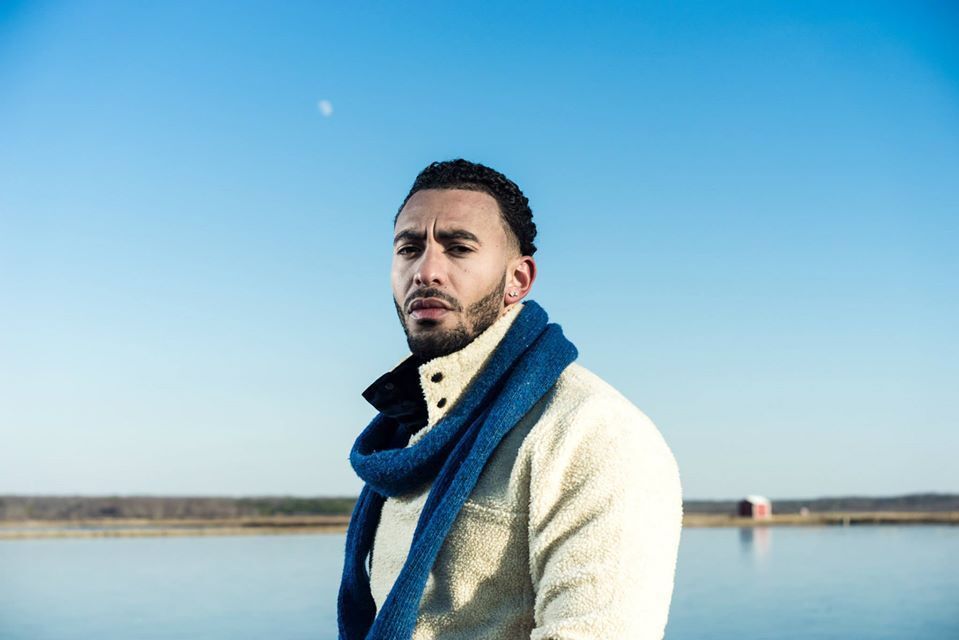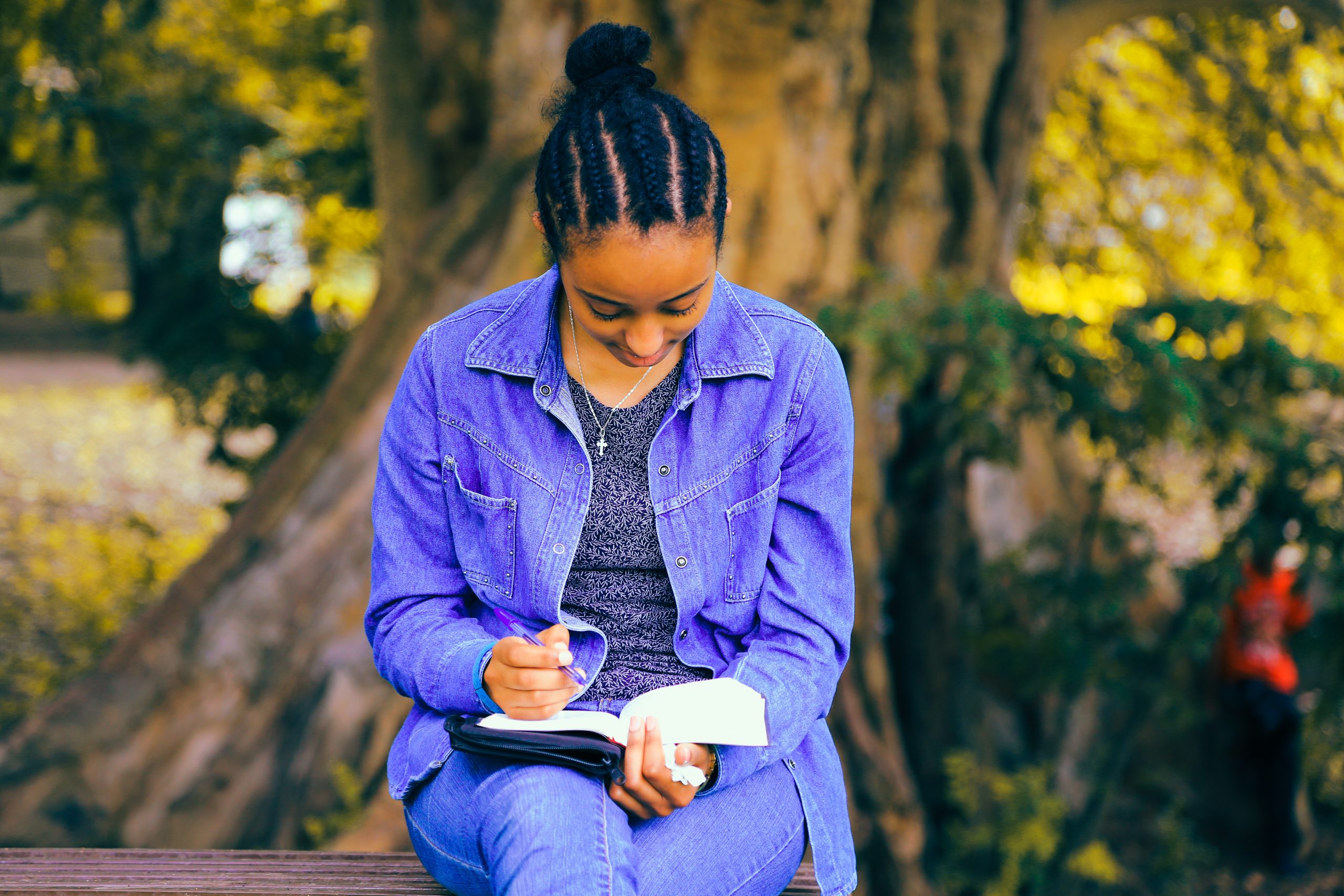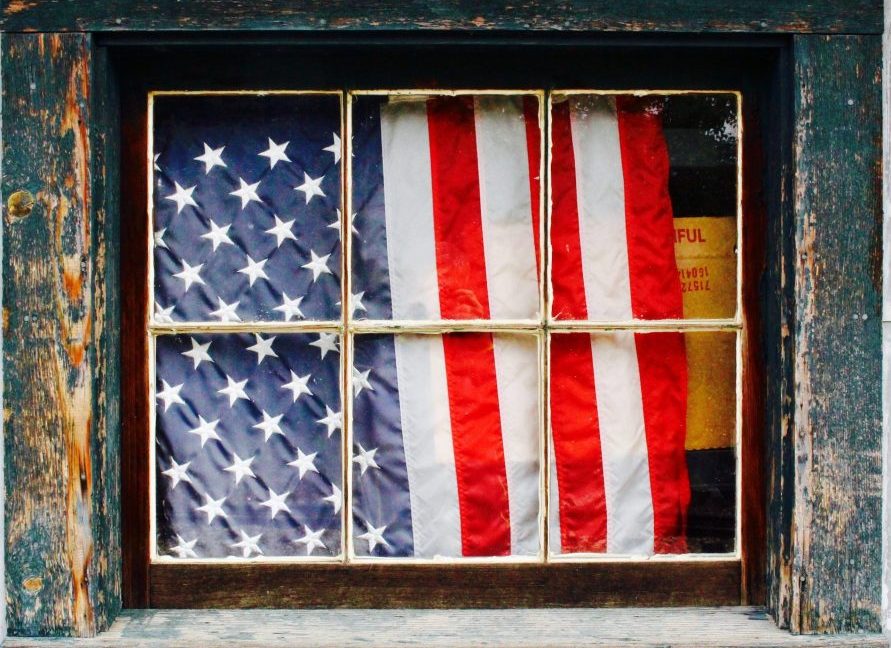interviews
Growing Up in Between White and Black America
Davon Loeb’s memoir "The In-Betweens" tells the story of a biracial young man navigating his identity and masculinity

Davon Loeb’s debut memoir The In-Betweens follows the story of his childhood, adolescence, and early adulthood as a biracial young man growing up between various cultures, races, and identities. Loeb grows up with a Black mother and a white, Jewish father. In school, he is one of the few Black students in a primarily white New Jersey suburb, and at home with his mother, he’s the only one of his siblings who is half white.
Throughout the story, Loeb struggles to fit into his communities, always feeling a sense of difference and disconnect. Belonging to multiple different worlds, Loeb reckons with his family history on both sides, reflecting on his Jewish identity as well as his Black identity. As he grows, he begins to define what race, culture, and masculinity mean for him.
Lyrical in its storytelling, The In-Betweens begins as a narrative of a young boy piecing together his childhood in a series of short, poetic essays. Loeb plays with language and memory, bringing together a tale that gets more grounded as it goes on, reflecting the narrator’s growth and assuredness as he gets older. And within Loeb’s own story, we get the stories of those who played a significant role in his life. His mother becomes one of the most important figures in the book, shaping him into a man and teaching him what it means to be Black in America.
The In-Betweens comes at a time when race and identity are fraught issues in this country, and in our political climate, where even teaching about race is becoming criminalized, a book like this is even more important. While Loeb’s story is personal, it is also highly universal, telling the stories of so many kids who have never had their stories told.
I spoke with Loeb over Zoom to talk about some of the major themes in his memoir and what he hoped readers would take away from the book.
Deena ElGenaidi: Your memoir is called The In-Betweens. Can you talk about what it means to be “in-between” and what aspects of that idea you hope readers will resonate with?
Davon Loeb: Initially, I remember thinking about the title of the book as those category boxes we had to check when we were taking a standardized test as a kid, thinking about how I’m a kid in a room, mostly with faces that didn’t look like mine, feeling like I had to pick a box. The box always said, “Check one.” You could never check more than one. There was this authority coming from whatever the standardized test was telling me, saying I had to pick a race. And as I’ve moved through my life as a Black and white, heterosexual, able-bodied man, I’ve felt more in between spaces than a part of one.
I’m neither fully Black nor fully white. I lived in a community that was all white, and yet I was part Black, but at home, I was the only one in my family who was half white. I have always felt like I’ve never fit into one category. I think if we strip race of that idea, and we strip whatever subjectivity there is—gender, sexuality, socioeconomics, religion—in many ways, we all feel in between, depending on what it is we’re struggling to fit into. And that’s important. While I’m an in-between because of my race, my culture, and the color of my skin, so are many of us. So are all of us.
DE: Well, like you said, race plays a large role in this book, and it’s an additional way to show your in-betweenness. You talk about being mixed race and being one of the few Black students at your primarily white schools. From what you’ve seen in your time as a teacher, do you think these experiences have changed for kids today? And why is it important to write about those experiences, especially in our current political climate?
DL: I think it depends on the communities. In New Jersey, for example, the teacher population racially does not match the student population, even if you’re in a diverse community. We just don’t have many teachers of color. So I don’t think that has changed much.
In many ways, we all feel in between, depending on what it is we’re struggling to fit into.
In New Jersey, we do have a law that you have to teach diversity and inclusivity, which is great. But the majority of that curriculum is not being taught by diverse teachers. No matter if the teacher is the greatest teacher in the world, there’s going to be a disconnect when you’re teaching about diversity, and yet not by diversity.
Ironically, I teach in the same district that I grew up in. I love where I grew up, and you can see that so much in the book. There is this sense of duality in that I love the Pine Barrens, and I had great experiences as a kid, but I also didn’t. They had Confederate flags at our football games. Even today, not much has changed. What I do think has changed, however, and what I think is even more important, is that the books the kids read are by people of color, queer writers, writers of different religions. So while the teacher population hasn’t changed, I do think that there’s an increase in books by writers of color.
DE: Do you feel like the culture has changed with the kids since you were in school?
DL: I could say in some ways, it has changed. There is more diversity in some of the suburban South Jersey communities. But at the same time, I think because of what has happened politically in the last five to six years, you could argue that it’s almost been amplified, which is why I think books like mine and books by writers of color are even more important.
DE: There’s also a lot of scenes that have to do specifically with masculinity, and you as a child trying to fit into what other people around you think a man is supposed to be. But as the story goes on, you begin to define masculinity on your own terms. Could you talk a little bit about how the people around you defined masculinity, what you took from it, and why it was such an important theme in the story.
DL: Actually, I think I had a little criticism about the masculinity that’s been shown in the book. Part of it is when I’m a kid, the narrator almost feels complacent to the masculinity. But it’s because he’s a kid. He’s still trying to construct his ideas. The masculinity is often showed physically through fighting, through strong bodies. And then as we move through the book, the narrator is still trying to figure that out.
There’s a chapter called “5-Series BMW,” which is really jarring. It’s about the narrator’s stepfather working on a car, and he makes a bunch of crude statements about the car being like a woman. There could be a push to pull into those scenes and really try to be more expository in the writing and really challenge it, but I don’t, in the sense that the narrator doesn’t challenge it. The narrator doesn’t understand what’s right or wrong yet. And then we move into another chapter, which is intentionally supposed to show toxic masculinity at its worst. It’s the chapter “Not the Worst of Boys,” which shows how these young boys, when they’re teenagers, have such a gross understanding of girls. I felt like it would be too easy to write myself neatly, to write myself as the narrator in a way where I look like the hero. But the narrator wasn’t the hero. The narrator did as much wrong as the other characters. That’s what toxic masculinity is, and I think it would be unrealistic for the book to arrive at what masculinity is when the narrator still doesn’t know yet. The narrator is still coming of age, and that reflects society — this is what boys are taught.
DE: That was a particularly interesting chapter because there is a sense that the writer knows the behavior is wrong, but at the time, that reflection wasn’t there for the narrator, and I think it played with that pretty nicely.
DL: It was hard. It was really uncomfortable to write that—to go back and relive it—but in no way as uncomfortable as it must be for someone to experience it on the other end. I have a chapter where I’m learning how to do manual labor by women, and I think that was my attempt to show masculinity rather than just to talk about it.
DE: That actually leads to my next question. There are a lot of women in the story that play a pretty important role. You have your mother, your maternal grandmother, and then later on your paternal grandmother, who sort of in her lack of presence plays a role. What do you want readers to take away from the role of women in the book and how those women shaped you as the narrator?
DL: In many ways, in real life, my mom has shaped me into who I am, especially because my relationship with my real father and my stepdad is somewhat and can be contentious. But I also think that it is the nature of the family in which I grew up. Sometimes, Black families have these strong women who are our narrators, who are storytellers, and who are trying to build these young men into good young men.
I didn’t have any teachers that looked like me or any books written about stories like mine. And I think so many of us are looking for that.
There’s a chapter about my mom telling me that if I get in trouble, my white friends are going to have different consequences, and how she feels this fear every time I go out. I wanted my mother to be as much of a character as everyone else.
I really like—and I haven’t had that conversation with anyone—how my paternal grandmother has played a role in the book. It doesn’t seem like there’s much, but I think there’s this sense of the narrator trying to find love through her, even though he doesn’t find it.
DE: Your mother also feels like such an important presence throughout the entire memoir, even when she’s not physically present. We hear her voice through the narrator. When you were writing the essays, how did you think about or envision your mother’s role as a character in this story?
DL: I wanted to show her in a way where she grows with us. She starts off as a poor Black woman who is trying to find herself and her independence. She’s this frontier woman. As we move through the narrative, her voice does get more cemented into the storytelling. She is part of the character building of herself, and also of me.
It actually wasn’t that hard to write her into a character. I think I was scared because it’s my mom, but I think I do it in a way where she is presented fully and dynamically. She’s a hard-working Black woman who did her best to raise a young Black man who didn’t know how to navigate the world on his own. And I think that she succeeded.
DE: Another interesting part of the book is when you try to connect with your Jewish identity. You come to this realization that even though your mother isn’t Jewish, and you weren’t raised Jewish, it’s a part of who you are. So for people who haven’t read your book yet, can you explain what led to that interest in that part of your identity and how that changed over the years?
DL: In storytelling, I’m always about using singular events. And sure in life, there’s more than one event that makes us think, “What’s my story? What’s my family history?” But in the book, I talk about this experience of going to the Holocaust Museum in DC when I’m in high school, and that really was a pivotal moment in my life when I felt connected to something other than what I grew up with.
What’s interesting is that when I would go somewhere with my dad, who’s white and Jewish, I almost felt like the world looked at me differently. Navigating going to the movies or going to a diner with a man who was white and seeing how he navigated through the world felt different. But because I only saw him sparingly, there wasn’t a consistent “this is my family. This is who I am.” But going to that museum, I felt connected to something other than myself. So it really wasn’t until leaving high school and going to college, into a more diverse town, that I started to embrace my family. Then after I lost my grandmother, I felt more connected to her.
DE: I want to go back to the beginning of the book. You start off before you were born, with your mother and father’s romance story. Why did you make that choice? And what was it like writing about this past that you weren’t a part of, but essentially was your origin story?
DL: It was uncomfortable in the sense of trying to imagine my mom and my father like that, but in a mature way. I had fun telling it, and I think the language is supposed to reflect romanticizing this relationship. But it also was hard to write because I’m shedding some serious personal experiences on the page, and I’m not only making myself vulnerable, but I’m making my parents vulnerable.
I think it’s hard to write about parents, but I felt like it was the most appropriate place to tell a story about two people who loved each other and were in an in-between in themselves and their relationship, and also as a Black woman and a white man in the ‘80s. Even then, which doesn’t seem that long ago, but I guess it is, their relationship was difficult on many different levels. So I think in order to understand who the narrator is—to really understand his identity—we have to start before he’s there.
DE: What is the biggest thing you want readers to take away from this memoir?
DL: Most of the readers right now are going to be adults, but I just think about being a kid and never reading anything like this. I wrote it for the kid I used to be. Kids of color don’t have many books written by them. And even kids who are in-between don’t have many books about their stories. I just think it’s so important to show that we’re all connected, even when we’re not. I just imagine a room full of kids reading this book and saying, “Wow, this happened to me” or “Wow, there’s a kid next to me, and this is what their life is like”—that they can develop empathy through my story.
I really want this book to get into schools and to be able to talk to kids because I didn’t have anyone. I didn’t have any books. I didn’t have any teachers that looked like me or any books written about stories like mine. And I think so many of us are looking for that.









